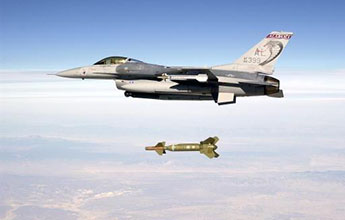
U.S. Air Force target designators are both wide-ranging and diverse in scope and content. Their history can be traced back to visual observations of targets, to the use of markers such as a smoke, weapon sites or panels, later moving into radio, lasers, infrared, radar and/or GPS to direct precision guided munitions (PGMs) against enemy targets. Also called "smart bombs," PGMs use guidance systems to direct a weapon to a ground target. Most PGMs in World War II and Korea were directed by human control. During the Southeast Asia War, PGM technology took a great leap forward with the advent of the Laser Guided Bomb (LGB), which was significantly more accurate. Target designators and PGMs have played a vital role in expanding the flexibility, efficiency and accuracy of weapons delivery and target destruction while also helping to minimize collateral damage.
Note: This online exhibit is continually being developed and more content will be added as we move forward. Please revisit this page often for updates.